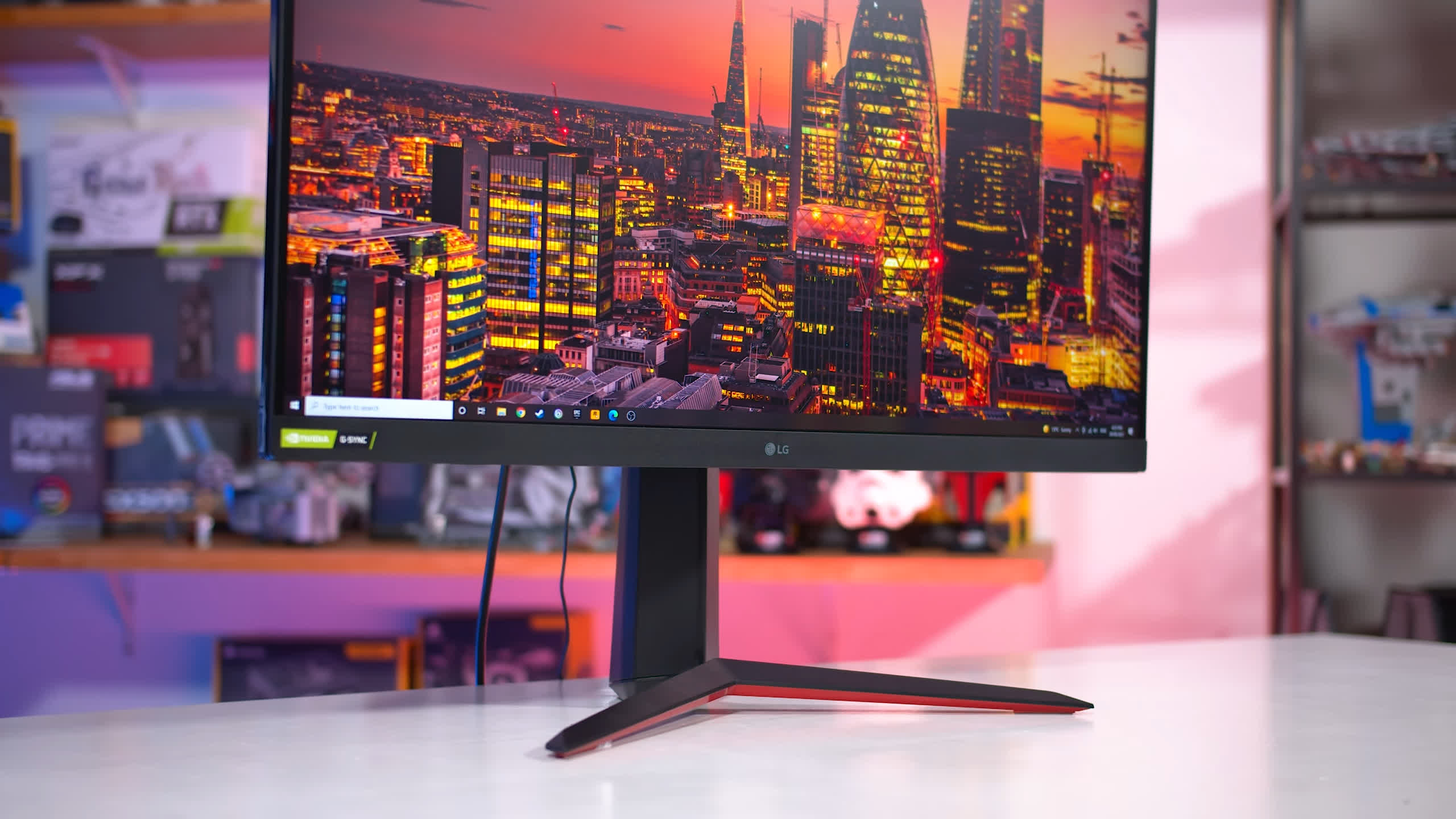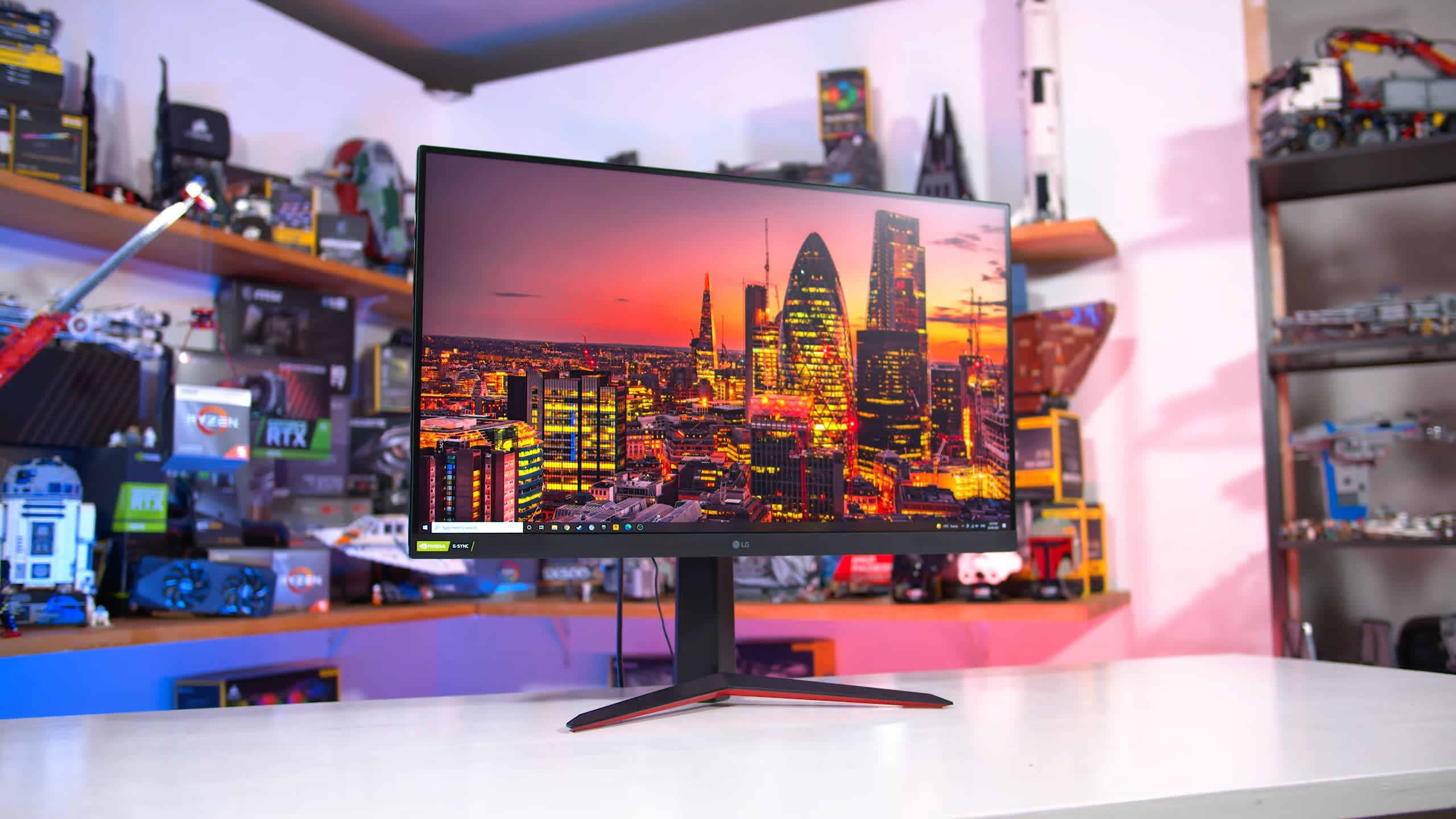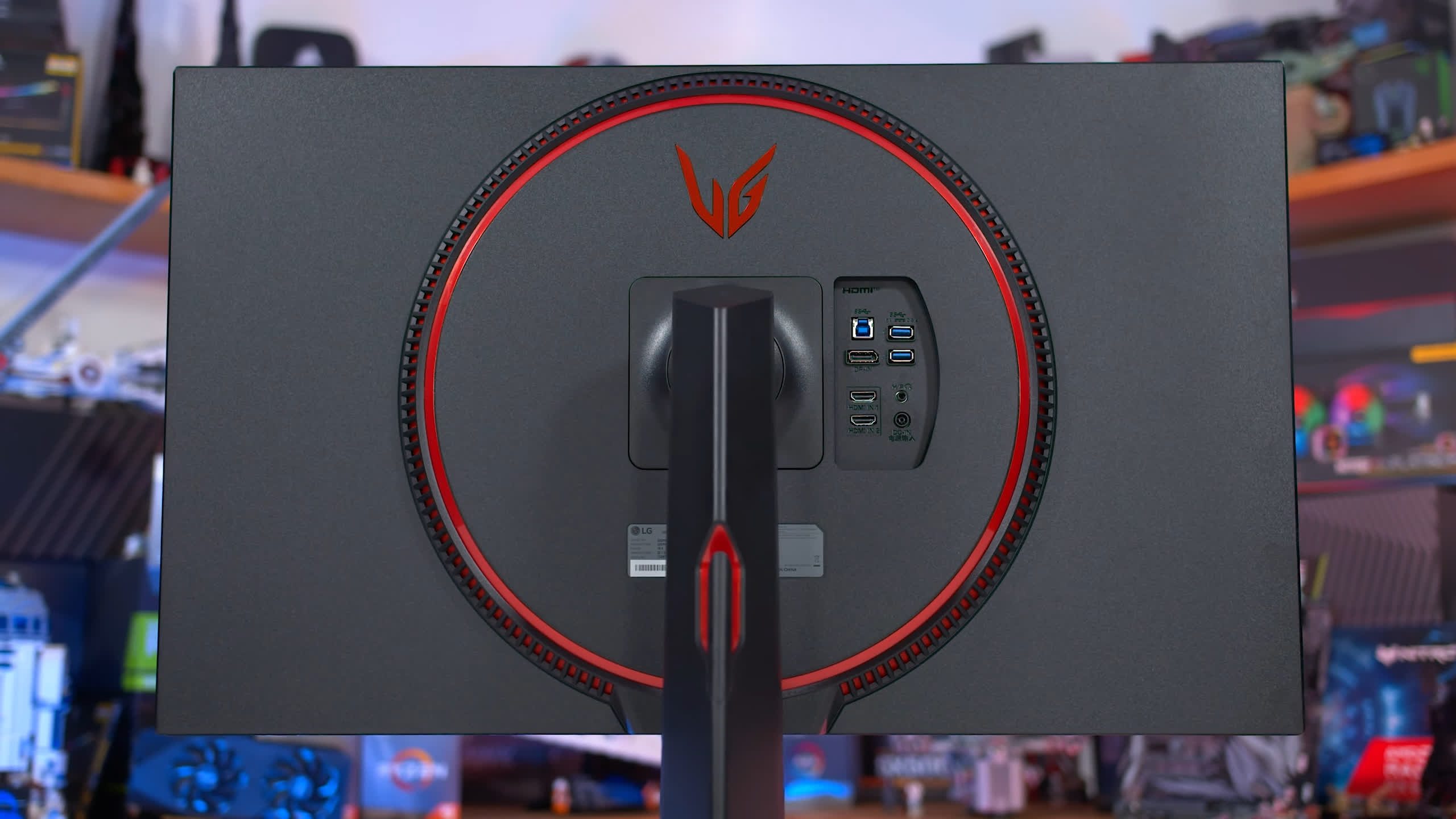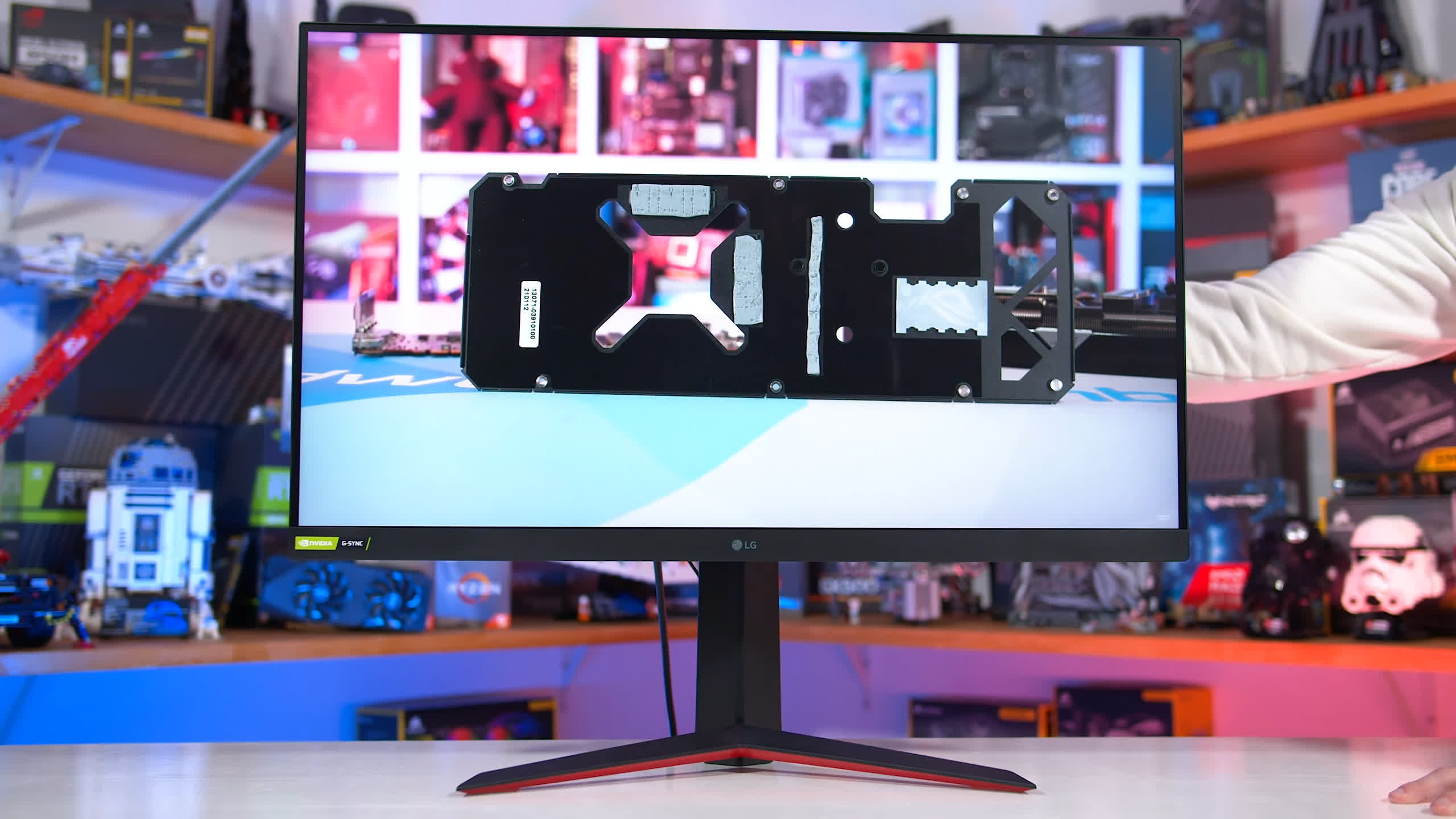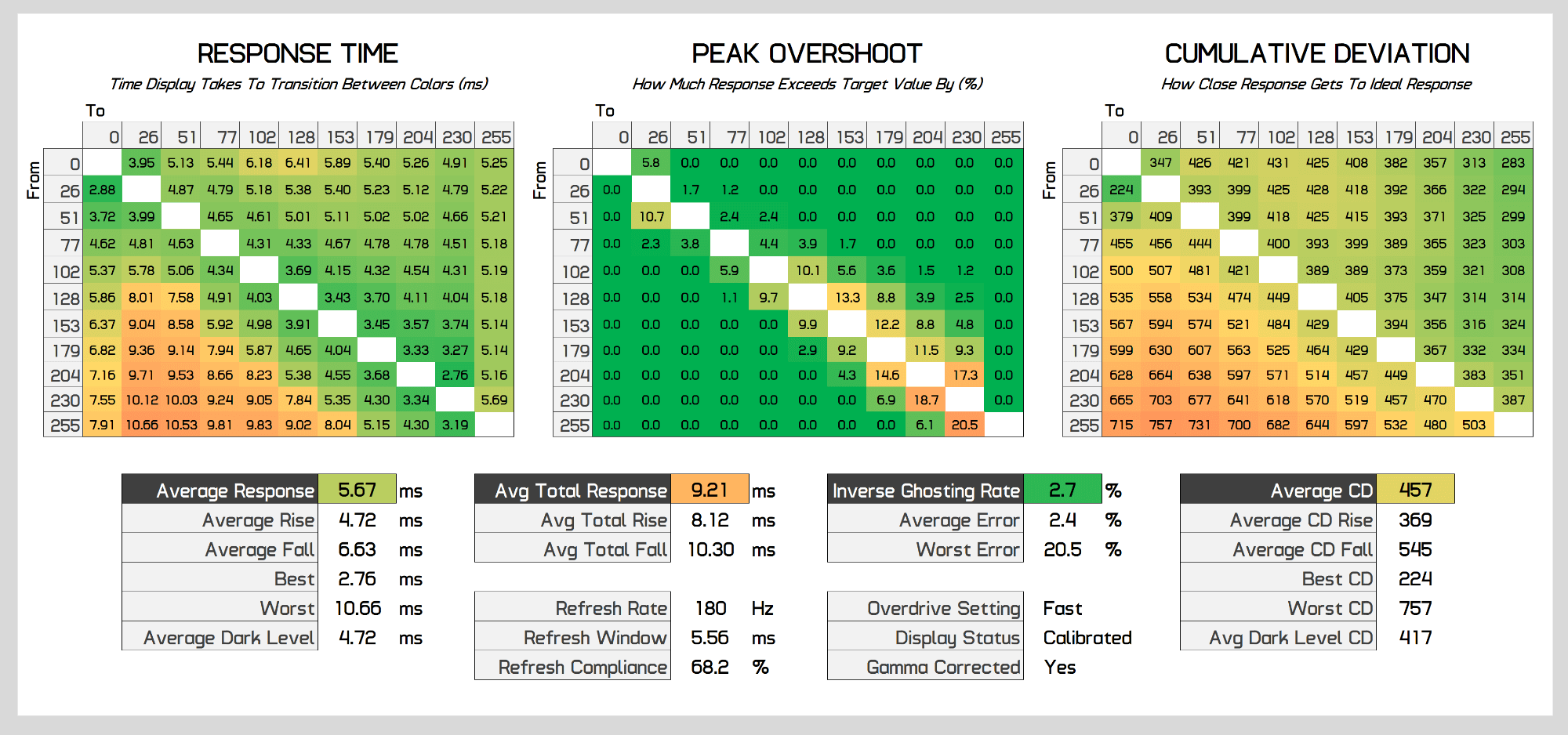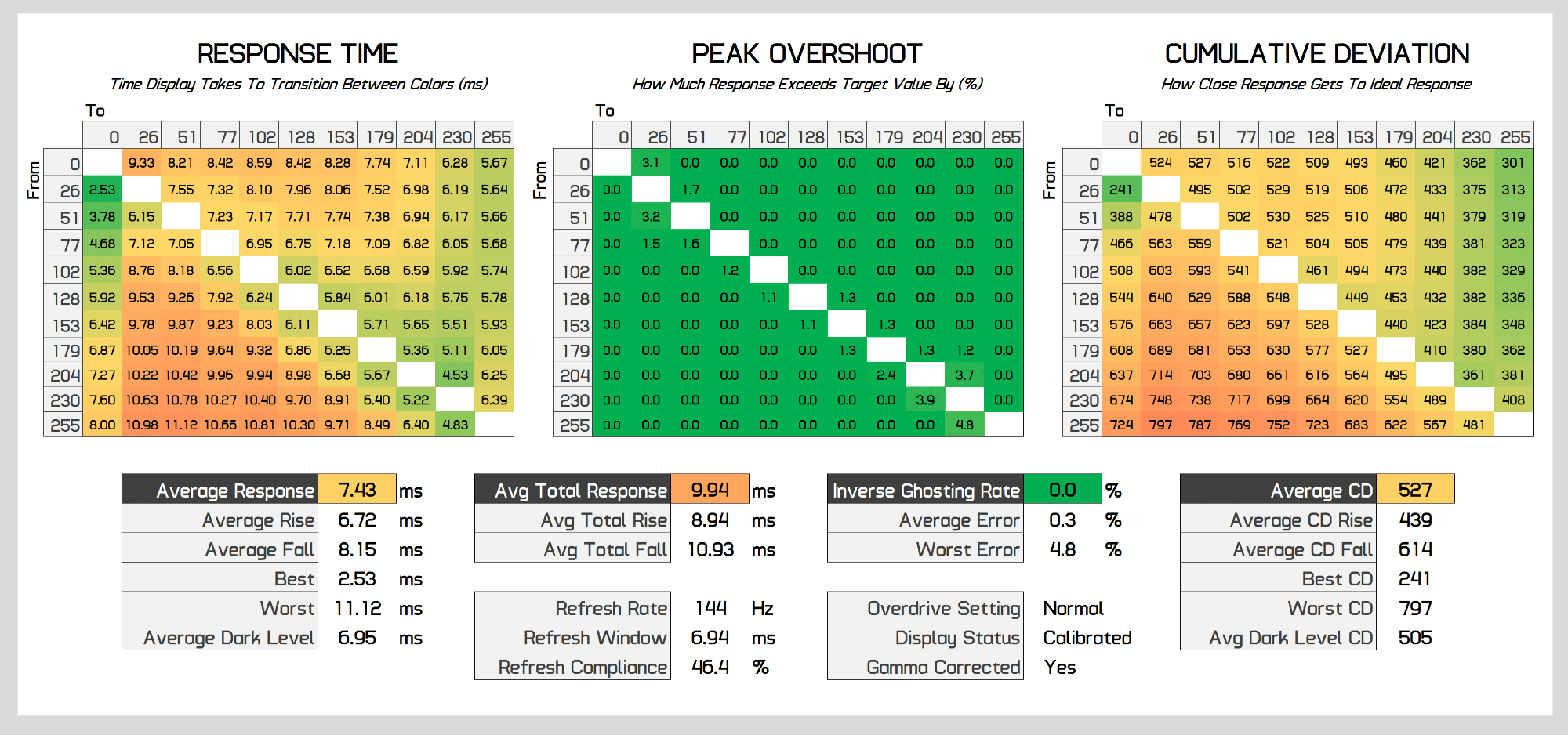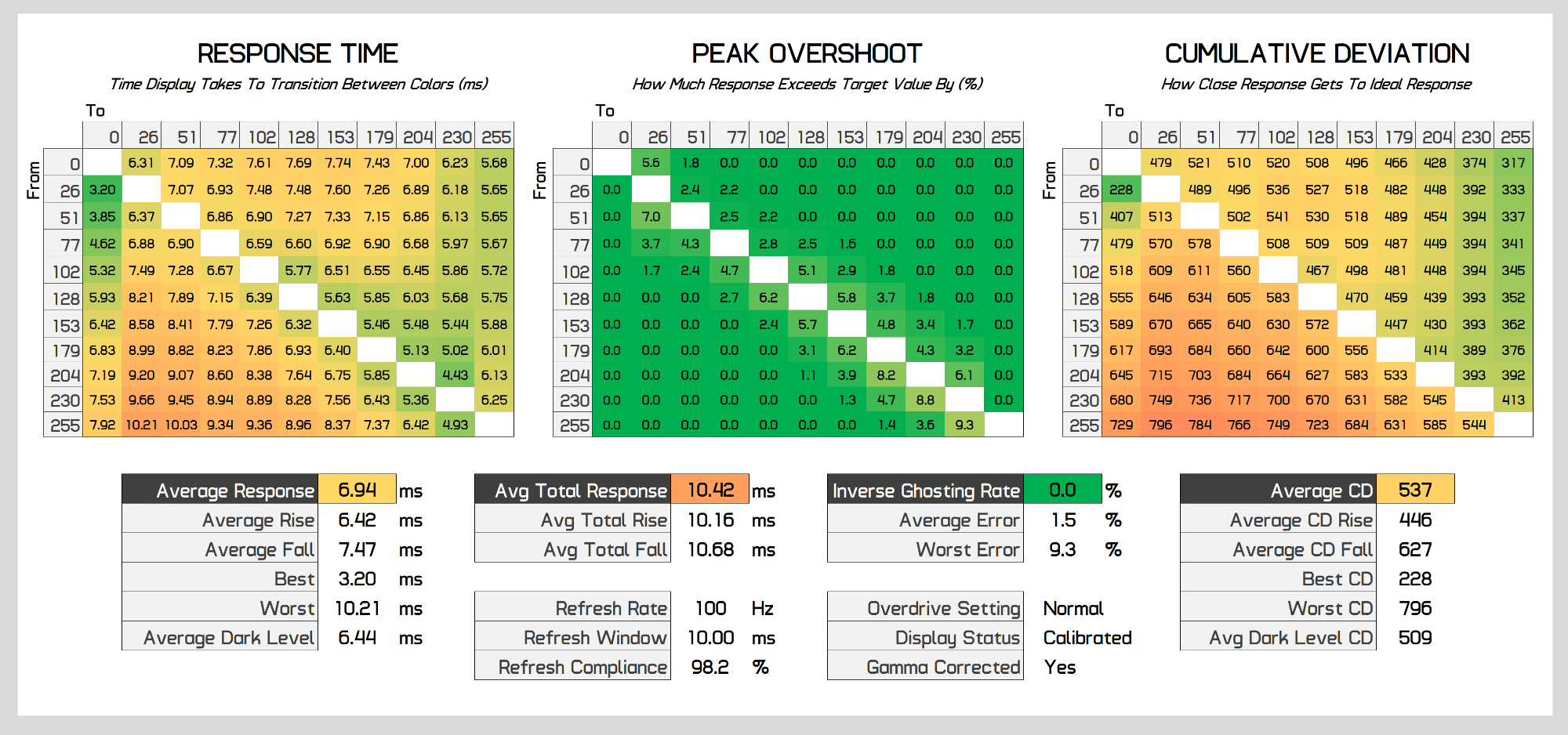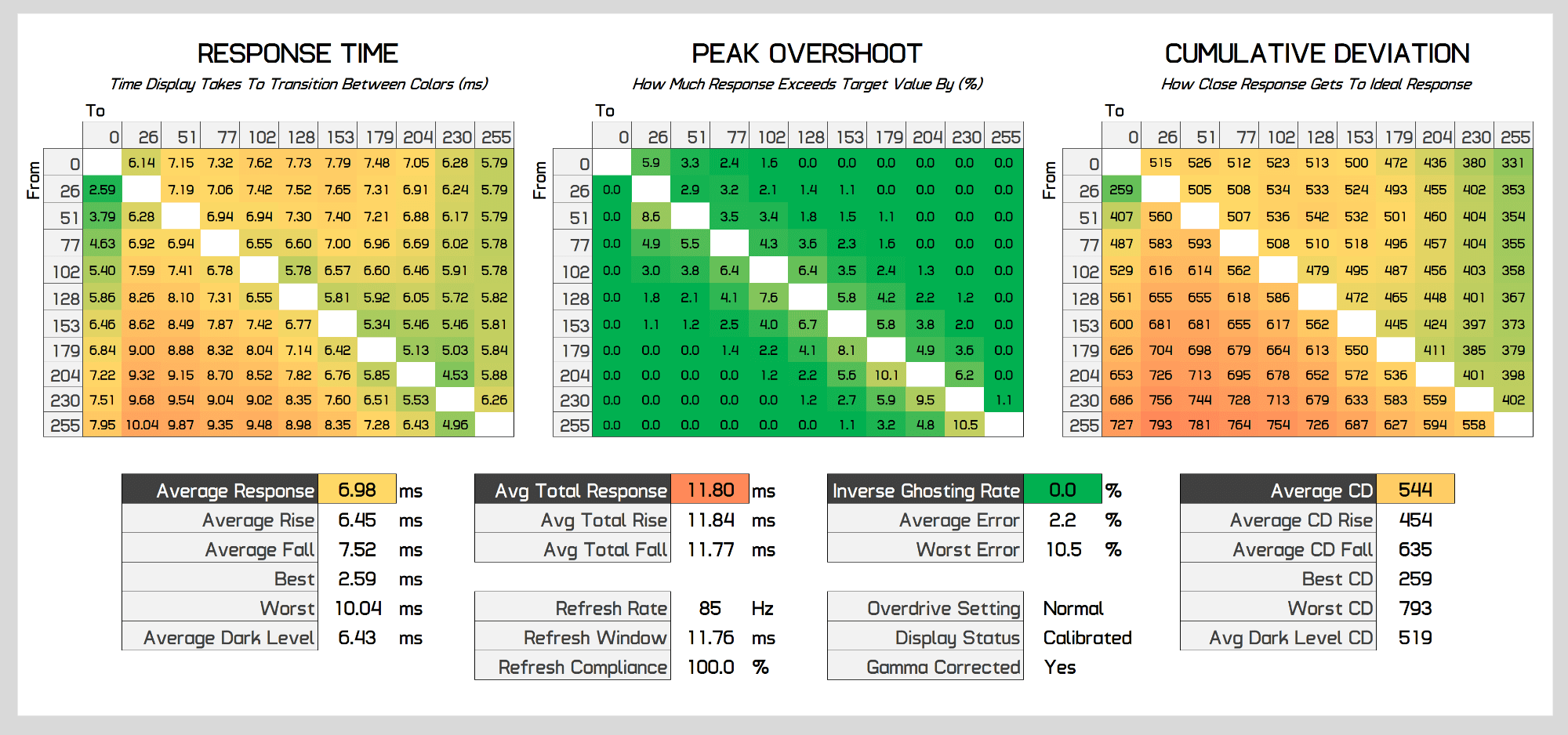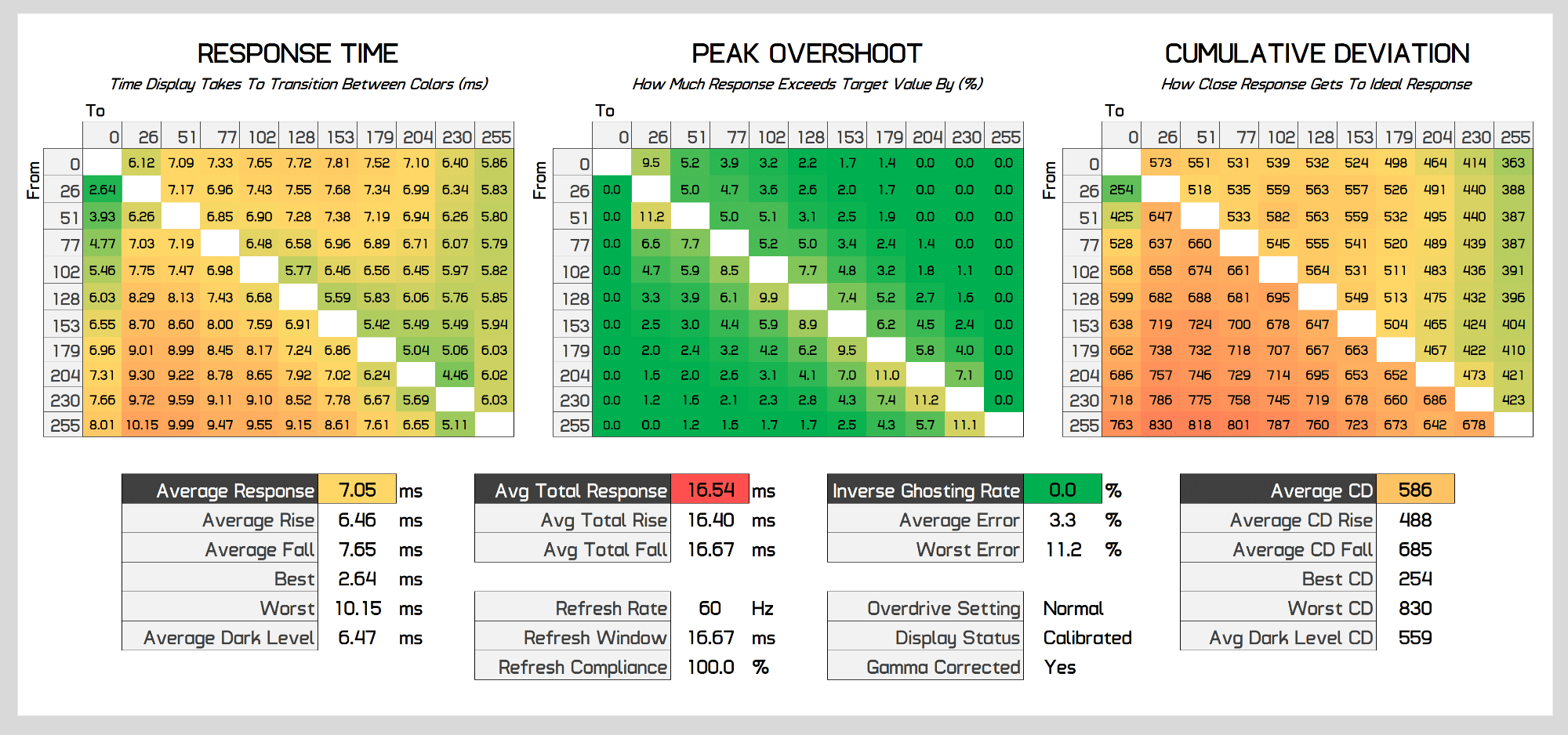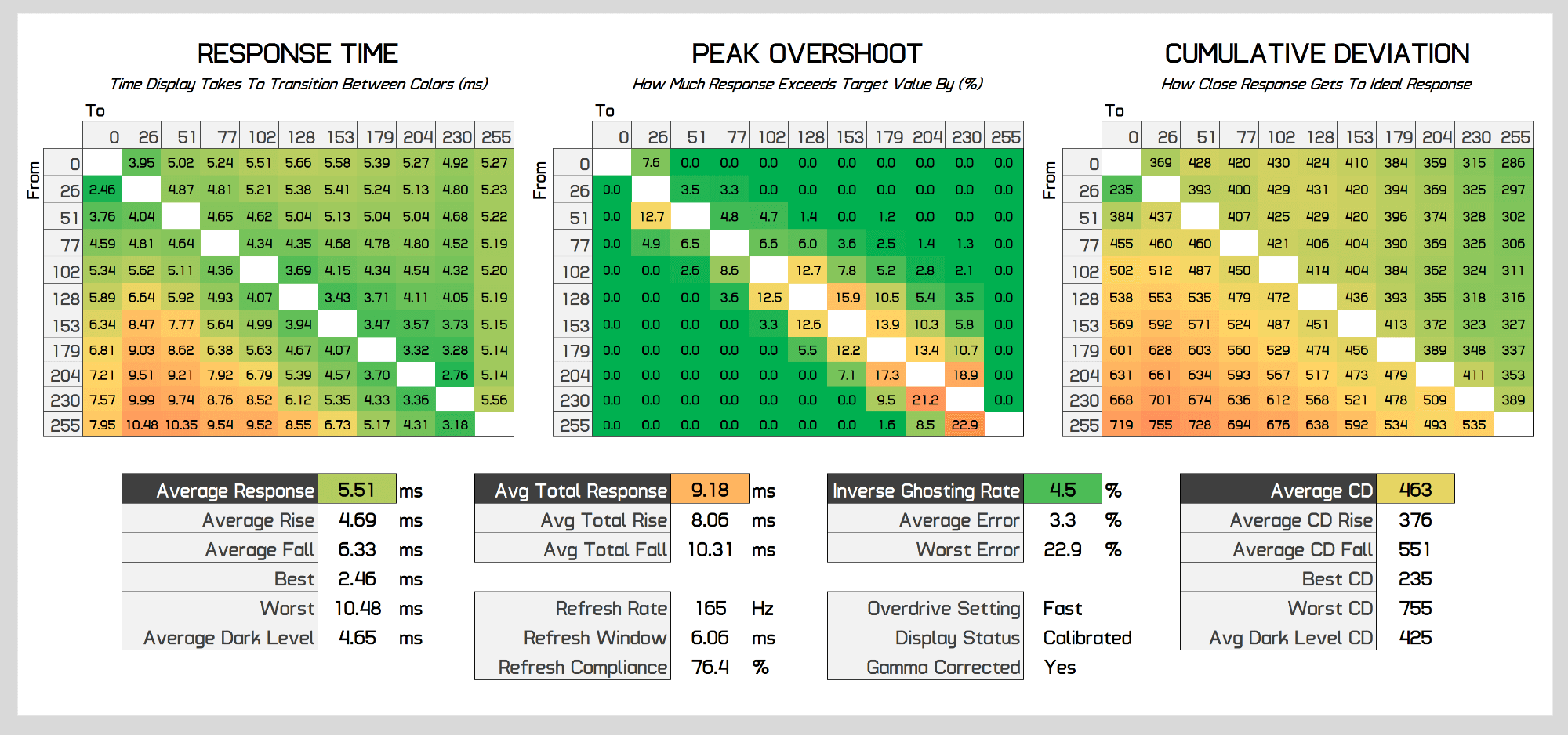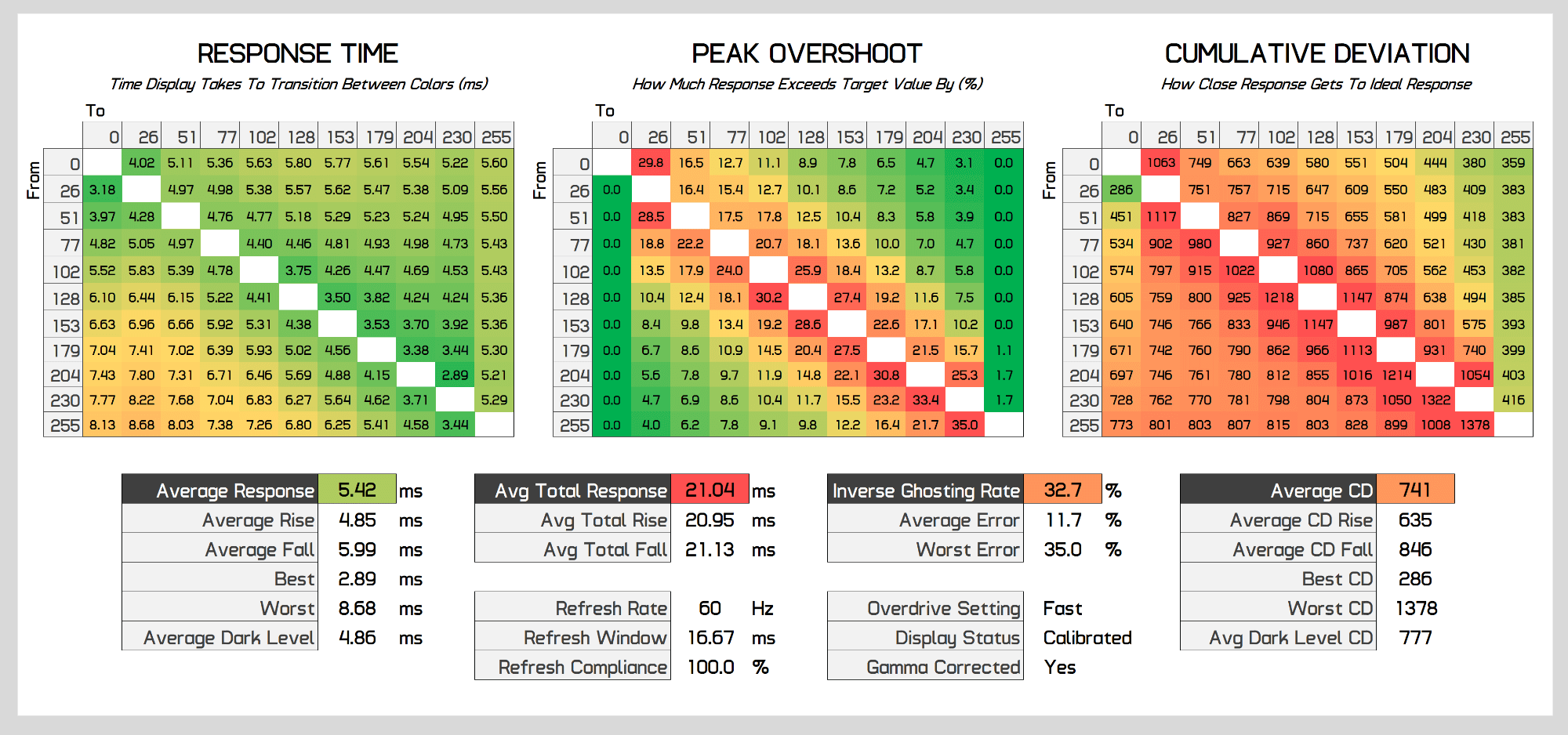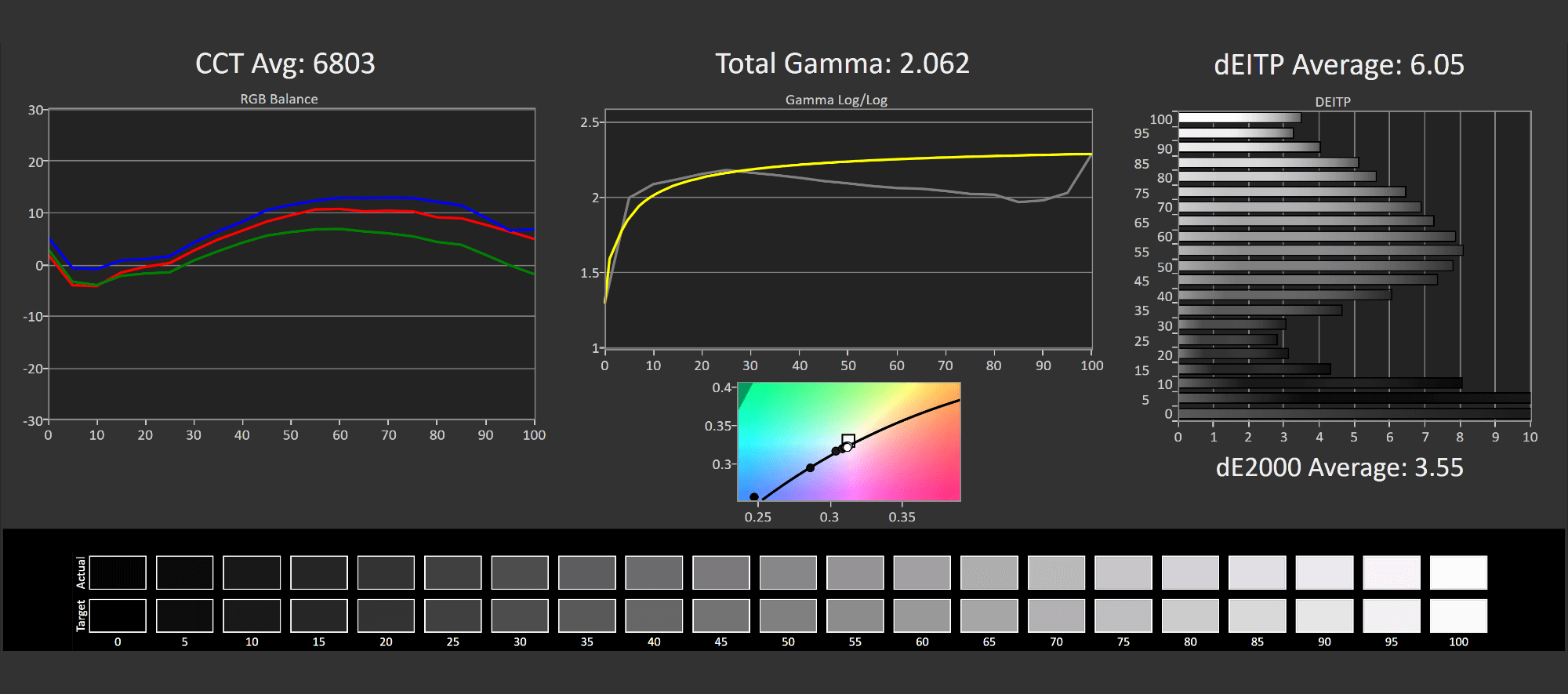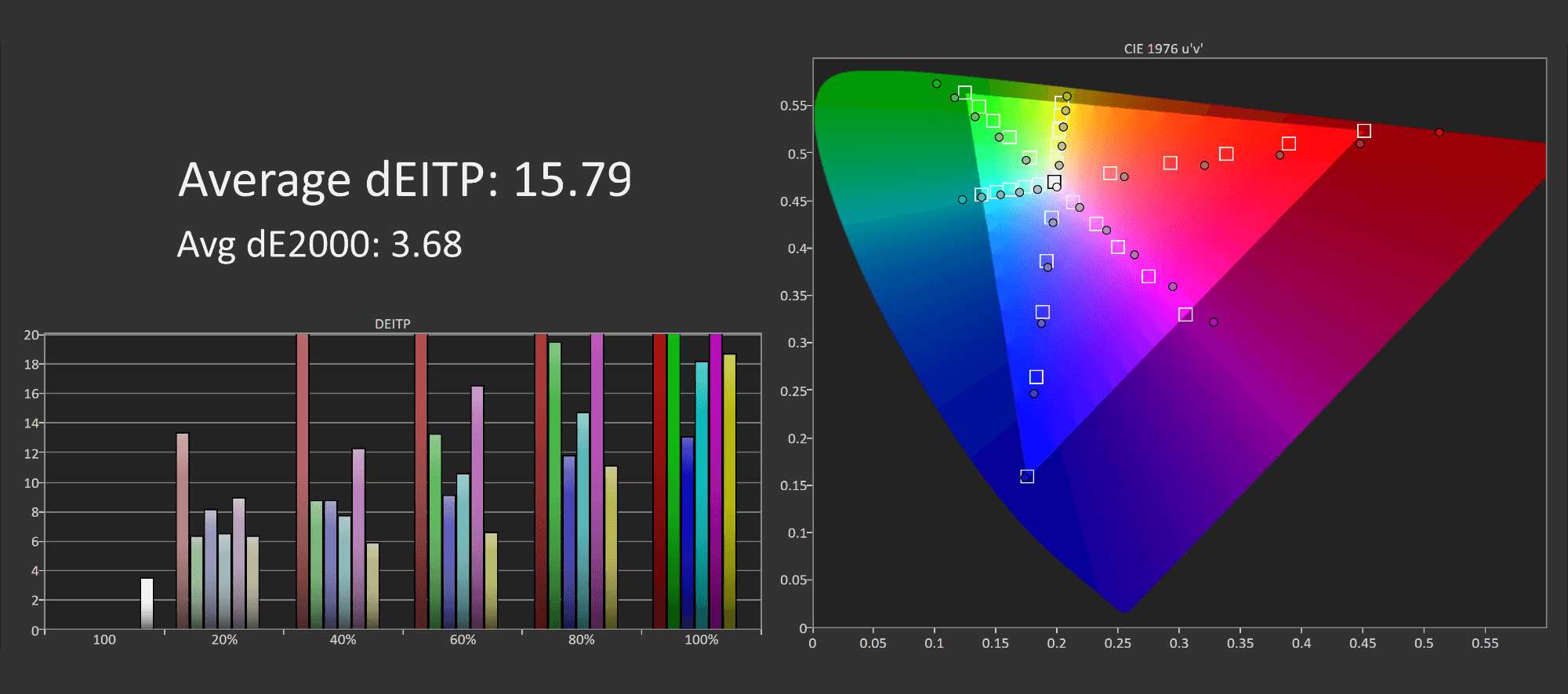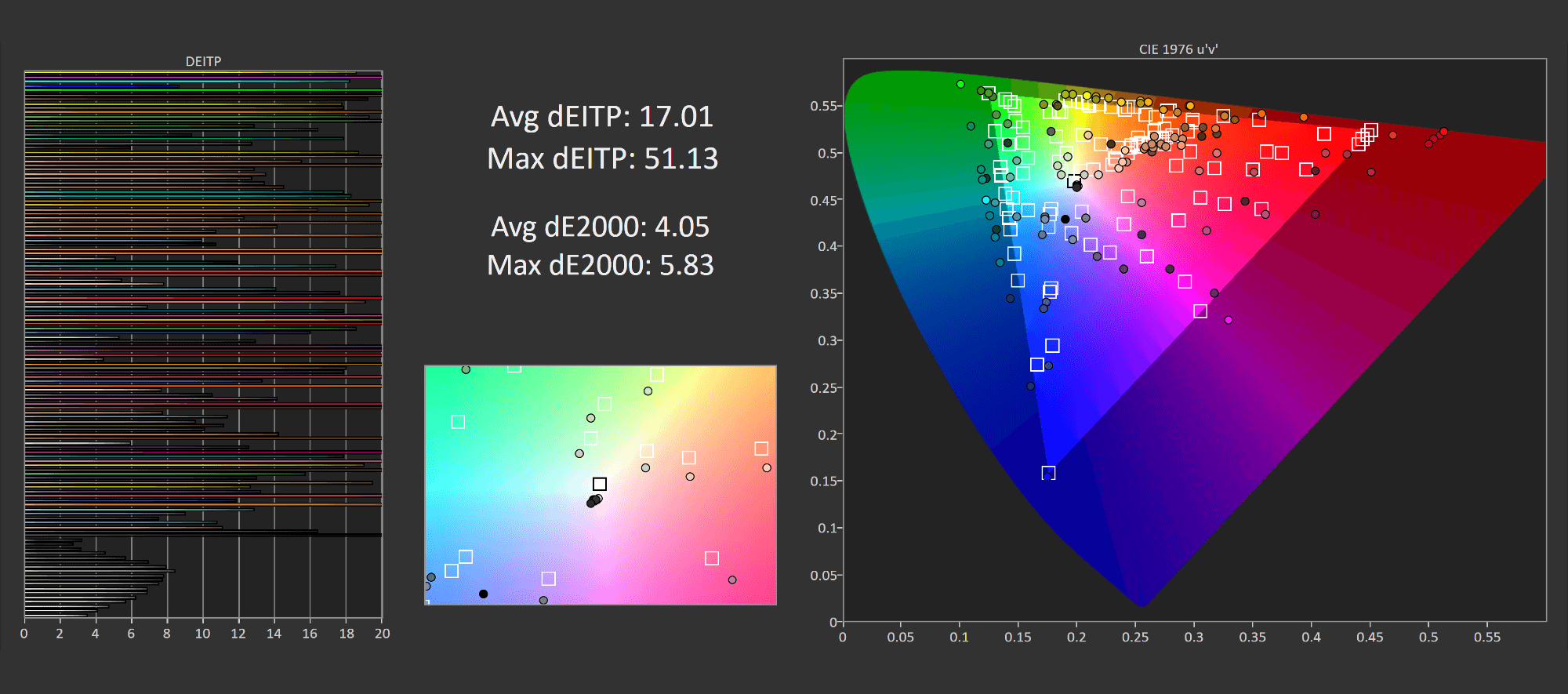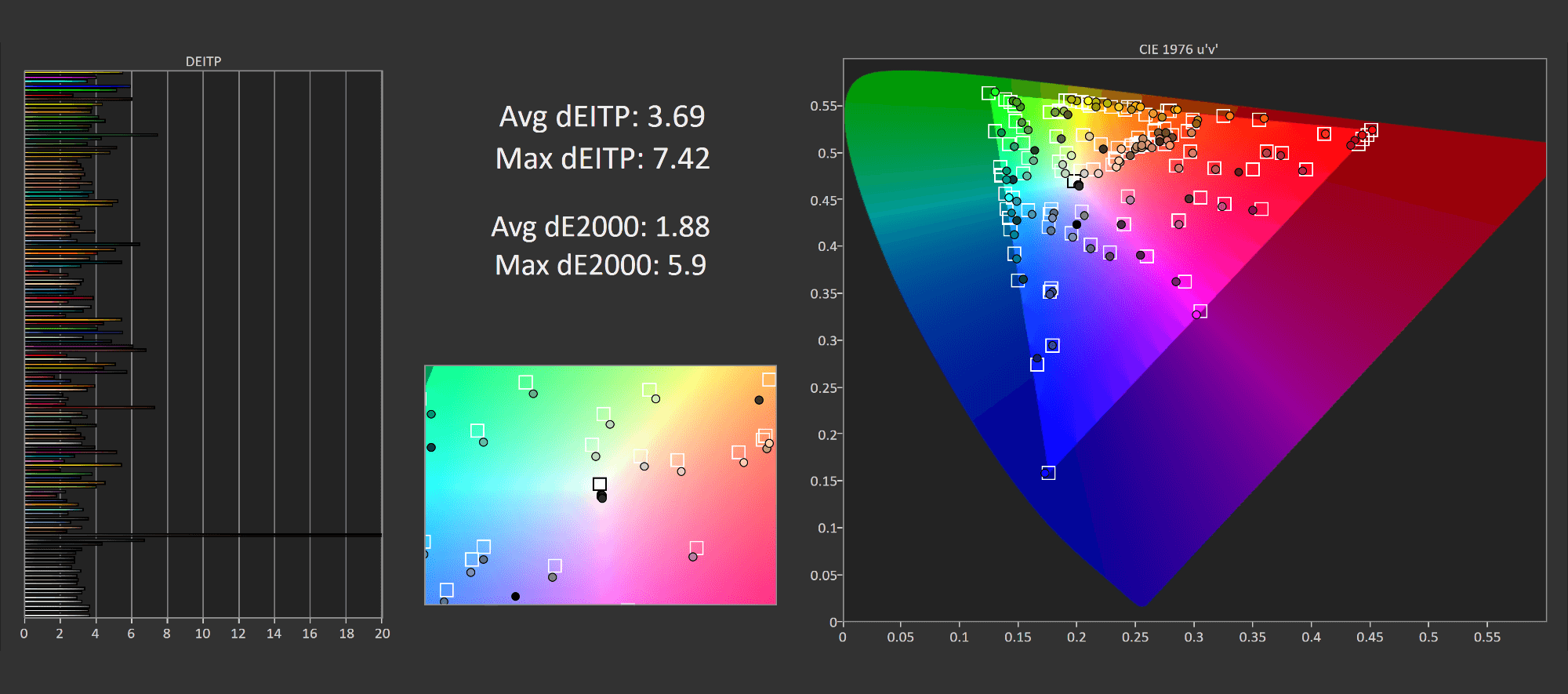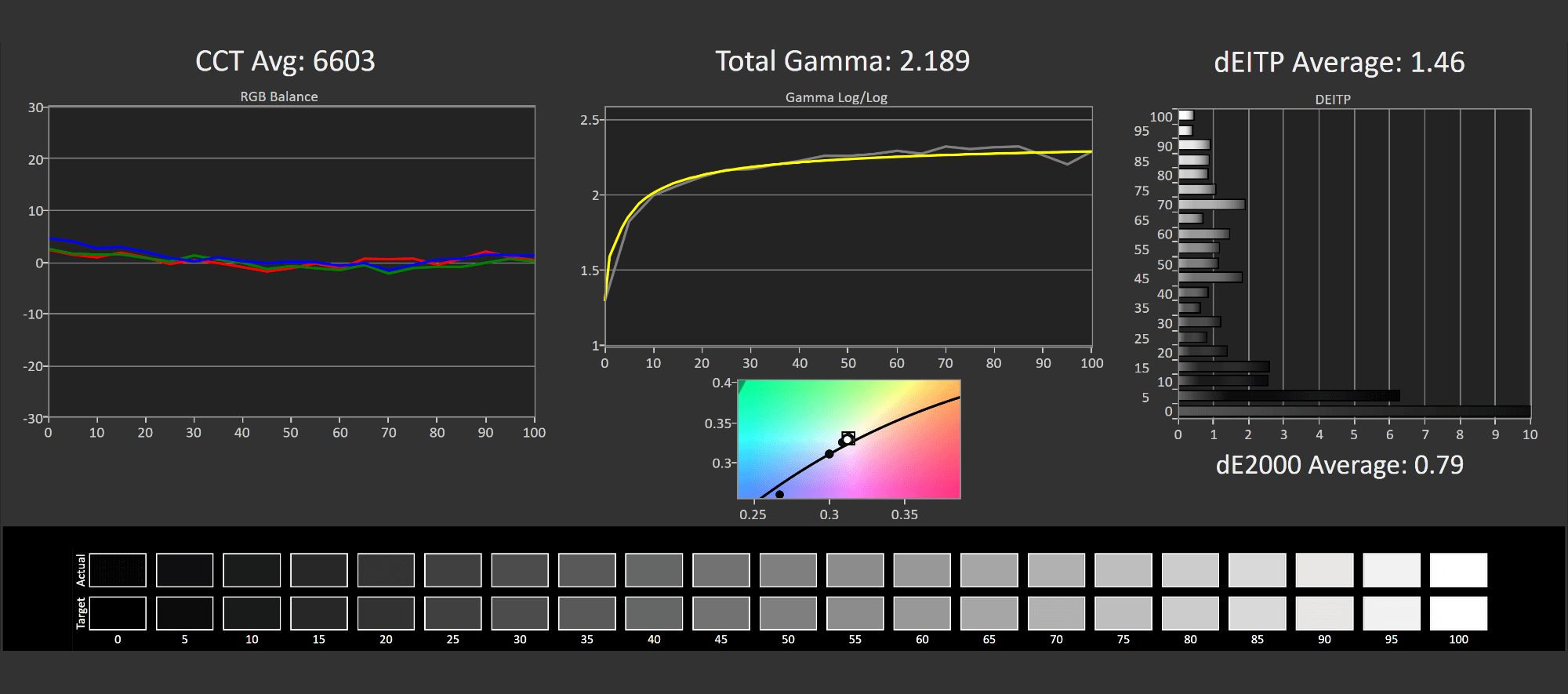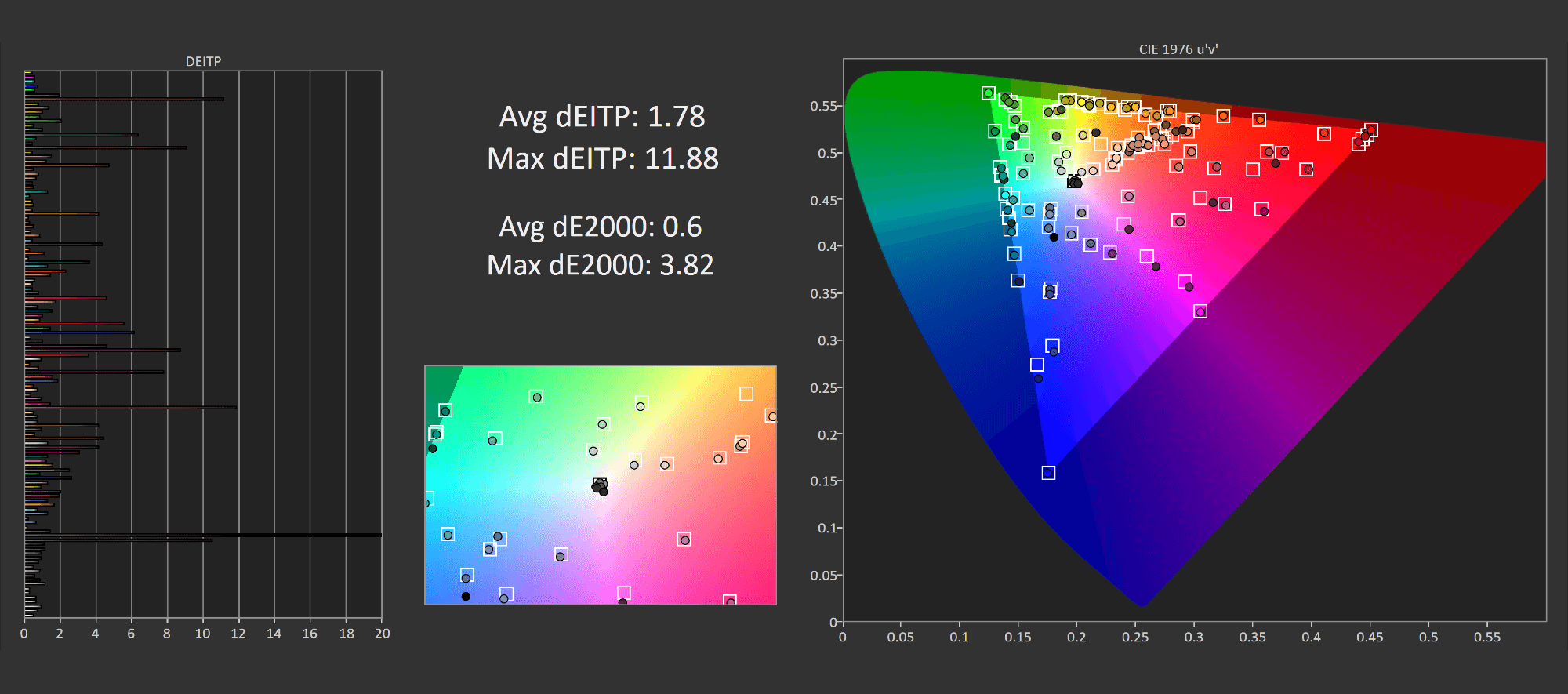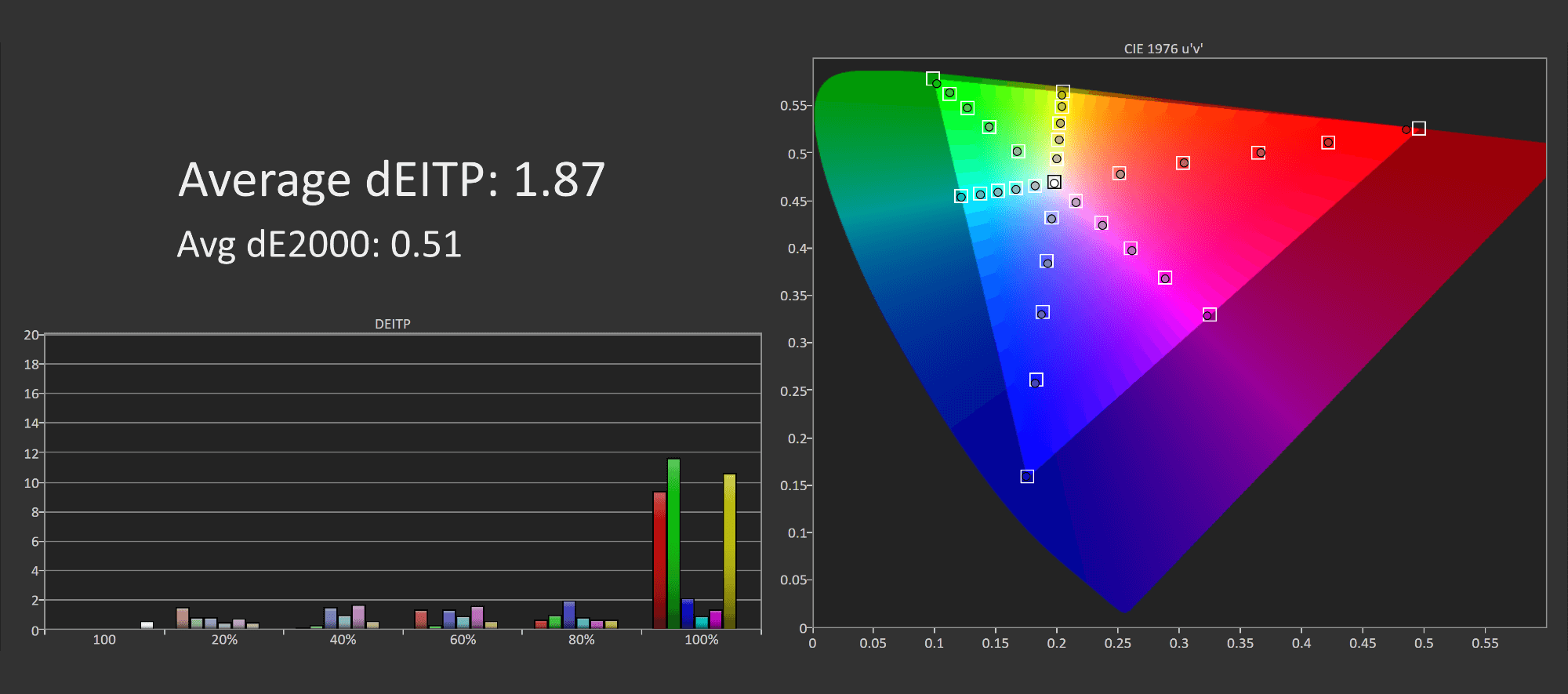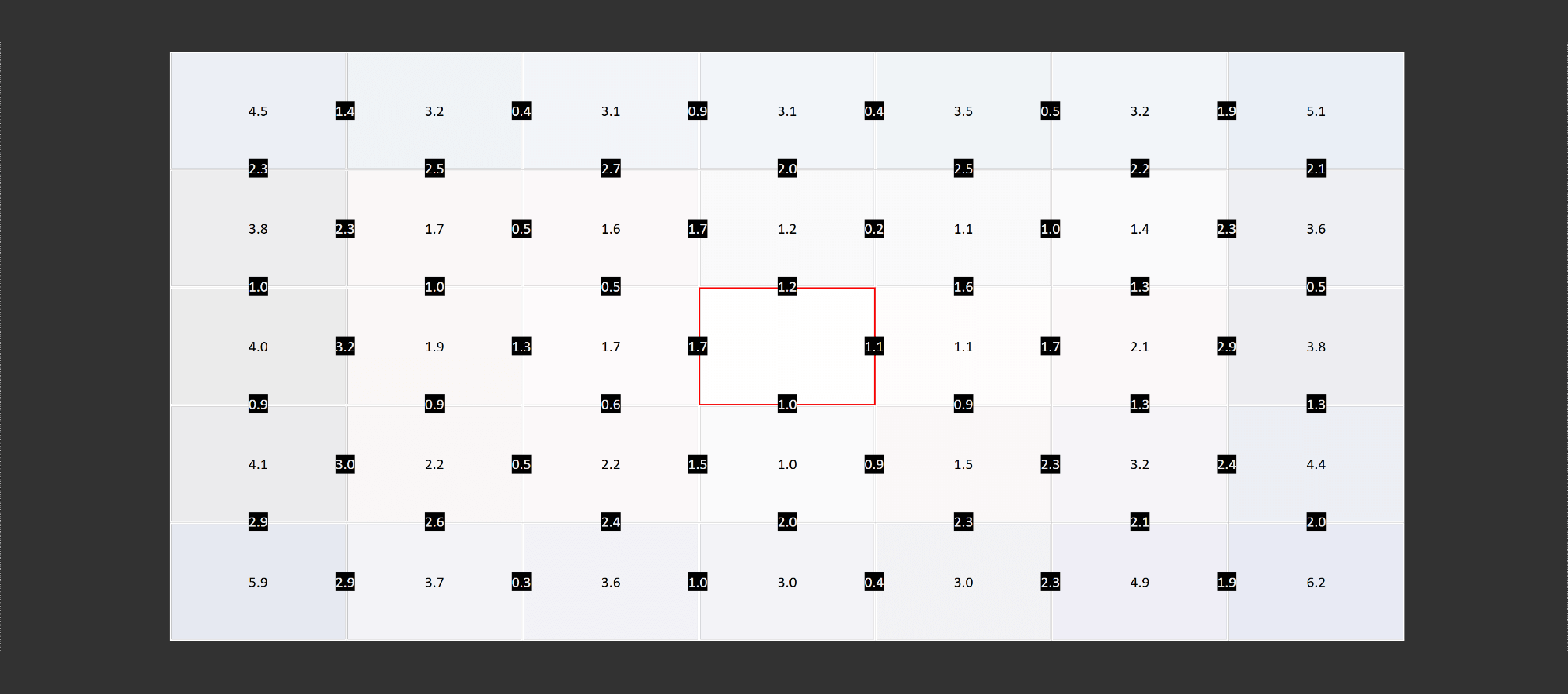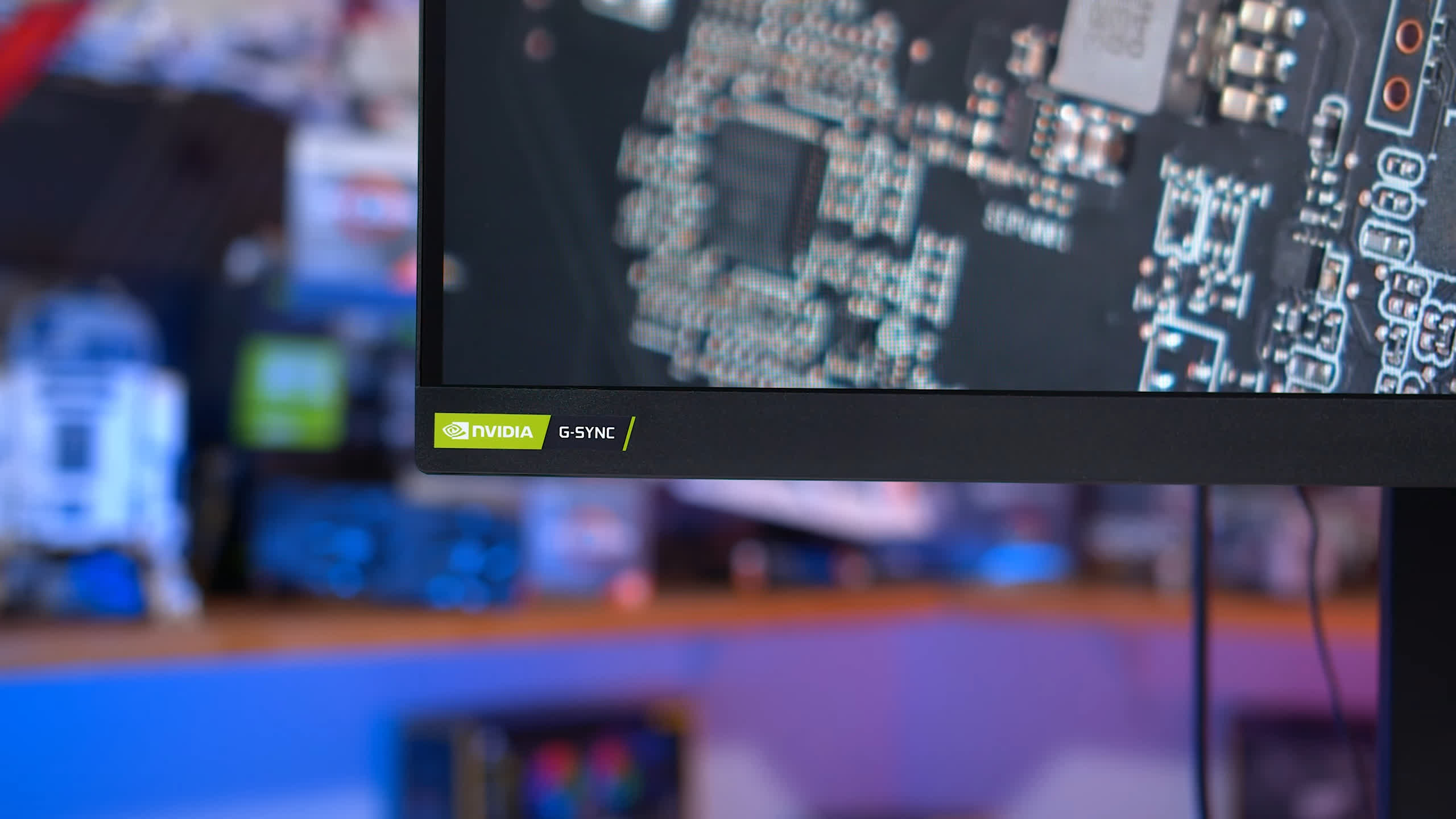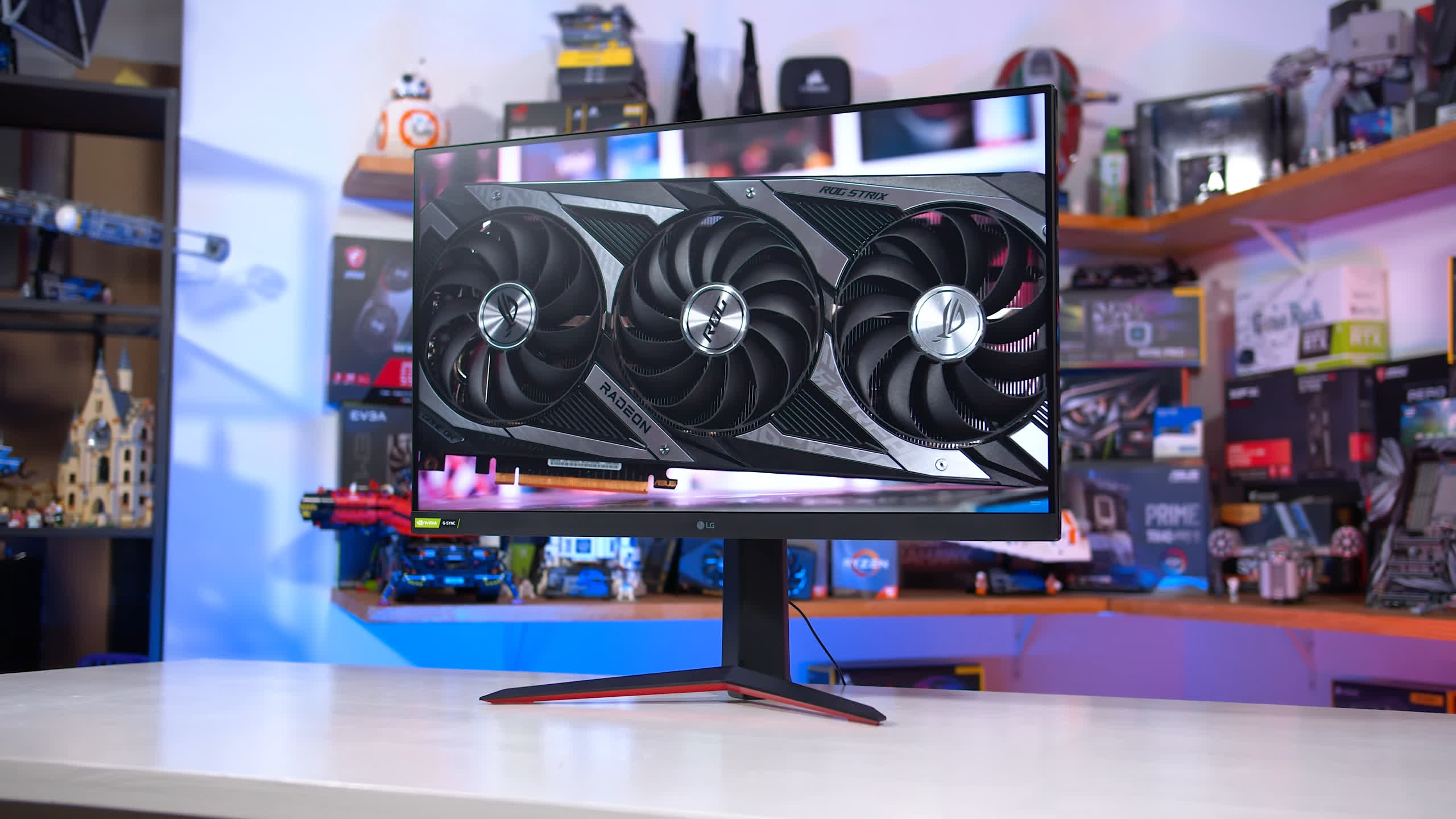Today we are reviewing the monitor that LG didn't want us to review, the 32GP850. It's been a bit of a process to get this one out, far from the smoothest review process I've ever had, but today we'll be going over everything you need to know if you are interested in this display, which has been on sale for a couple of weeks now.
Now you might be asking, why didn't LG want you to review this monitor? I'm not going to rehash everything about the LG saga from a couple of weeks ago, we have a full video on that topic if you are interested, but the basic recap is this: after we received a LG 32GP850 review sample, they wanted to impose restrictions on how we tested the product, and offered compensation for us to comply. When we refused, they asked us not to publish the review. Instead we exposed them, as all reviewers should maintain full editorial control over their independent reviews.
Shortly after this video went live, Ken Hong, LG Electronics Head of Global Corporate Communications, contacted us and resolved the situation, implementing sweeping changes to the way LG handles monitor reviews. At this point we can confirm that the process of implementing these changes is well underway, and indeed we are speaking to new people at the company. In fact, LG have completely changed their stance: they are welcoming this review and have removed any and all restrictions, so we'll be going about things as we always do for monitor reviews. We never agreed to any restrictions or embargos in the first place, but these are always tricky situations to navigate so it's nice to get the all clear.
Of course, with LG's initial approach to the 32GP850 review I was very curious to see whether this product is actually flawed in some way, and whether the review guidelines were intended to hide these flaws. It's certainly a suspicious situation, so I've been extra thorough with this review in an attempt to find any problems.
This is a 32-inch 1440p IPS monitor with a maximum refresh rate of 180Hz. It's essentially a larger version of LG's 27GP850, it offers a very similar set of features, uses the same LG Nano IPS technology for the panel, and visually it's quite similar, too. However, as we've found many times in the past, using a panel from the same family doesn't guarantee the same performance at a different size, so that will be something to explore.
The 32GP850 is priced $100 above the 27GP850, which is a standard price difference between 27 and 32 inch monitors. With the 27GP850 currently at $450 or thereabouts, the 32GP850 is currently selling for $550, again a fairly typical price for a mid-to-high end medium-high refresh rate 1440p gaming monitor.
From a design perspective, the 32GP850 looks virtually identical to the 27GP850 except for its larger size. In fact right now I could be showing you photos of the 27-inch model and saying it's the 32-inch model and 99% of you would have no idea. But of course, that's not the case at all, these are fresh photos of the 32-inch model.
There are some subtle differences to the design. The chin on the front of the monitor, so the section of bezel below the display with the LG logo, is a little thicker on the 32GP850 than the 27GP850. Everything else is also just bigger. But we're getting the same sort of stand design with the angular pillar and red highlights, same use of materials which is mostly standard black plastic for the outer areas, and the same circular design on the rear.
I'm a fan of this rear design because of how easy it makes accessing the rear ports. Not as ideal for wall mounting but this prevents fumbling around during the setup process. Two HDMI 2.0 ports and one DisplayPort 1.4, plus a couple of USB ports and an audio jack. The HDMI ports are limited to 144Hz at the display's maximum resolution, so you'll need to use DisplayPort to access 180Hz functionality.
The stand supports height, pivot and tilt adjustability, giving a decent range of motion that includes the ability to use the display in a portrait orientation if you want to. There's also VESA mounting support if necessary. Meanwhile the on-screen display is controlled through a directional toggle on the bottom edge of the monitor and includes a standard set of features, nothing too exciting.
Display Performance
Time to take a look at response time performance, which we tested how we wanted to test it, not how LG said we should. In any case there are four performance modes, ranging from Off to Faster, similar to LG's other monitors. And we're starting here with a look at the Off mode, giving us a look at native panel performance without overdrive. As always this isn't really a mode most gamers would choose to use, but it does show an 8.6ms average response which is pretty decent without any voltage tweaking.
Then we move up to the Normal mode at 180Hz. This mode features a 7.52ms average response time, which is marginally improved on the Off mode, and we also see no overshoot here at this refresh rate. The cumulative deviation result, which measures the difference between the monitor's actual response curve and the ideal instant response, is also quite solid at around the 500 mark without much overshoot. This typically indicates good motion clarity.
The step up from Normal is Fast. Response times have improved again and now sit at 5.7ms which is very solid, and this is at only a minimal cost to overshoot. As a result, cumulative deviation is lower, now at just 457, and typically this is what we are looking for when assessing overdrive modes. So in short, Fast is better than Normal when gaming at 180Hz and has a marginally clearer image than previous modes even with a small introduction to overshoot.
However the Faster modes goes backwards, which is typical behavior we've seen across many monitors using the fastest available overdrive setting. Cumulative deviation is 560, an increase on the previous mode, and that's due to the introduction of much more significant inverse ghosting.
The inverse ghosting rate here is 60%, suggesting that roughly two thirds of the time you'll notice some level of inverse ghost trails, which negates the advantage of the fast 3.3ms response times. While this isn't the worst "Faster" mode I've seen and it is better than what LG rolled out in the original 27GL850 a few years back, it's still not the mode I would recommend using when the Fast mode is superior.
For variable refresh rate gaming we do have to assess performance across the refresh range. Using the Normal mode to start with, in the higher refresh rates we're not getting great refresh compliance, at times below 20%, so in these modes response times aren't quite fast enough to deliver a true 180Hz experience. However, overshoot is virtually zero at all times, and response performance is consistently in the 7ms range, so this is a good mode to choose for lower refresh rate gaming when you don't want to see any artifacts.
The Fast mode is more suitable for higher refresh rate gaming, with better refresh compliance and minimal overshoot at the higher end of the refresh range. But as we move down the refresh range, it's at lower refresh rates - particularly below 100Hz - that inverse ghosting becomes more noticeable. It's nice that performance remains around the 5ms mark, however the cumulative deviation results reveal that the Fast mode is only better than the Normal mode down to 100Hz, below that point, Normal's lower overshoot delivers a better image and that's generally what I observed in visual tests as well.
What this means overall is that the 32GP850 doesn't properly have a single overdrive mode that delivers ideal results at all refresh rates. But it's also not the worst monitor that needs multiple overdrive modes, as the usable range for both the Normal and Fast modes is quite large. It's really only at the upper end of refresh rates using the Normal mode, and the lower end using Fast, that performance isn't acceptable. Gamers looking to play between 80 and 140 Hz are going to see very similar results in either mode, and my preference for that "set and forget" mode for adaptive sync is Fast.
This isn't as good as the 27GP850, which has a larger usable range again due to slightly better response time performance overall. However it's not as bad as other displays that have much more narrow usable refresh ranges for their overdrive modes. To summarize the results aren't perfect by any means, but not awful. Variable overdrive would have been a good addition here to resolve these lingering concerns.

Compared to other similar displays on the market today, this batch being entirely 1440p monitors, the 32GP850 as I talked about just moments ago isn't quite as fast as the 27GP850 when comparing the best vs best performance at the maximum refresh rate. The 27 inch model reported a 4.7ms average response time, compared to 5.7ms with the 32 inch model, albeit with lower overshoot. The results from the 32GP850 therefore aren't too different to other LG Nano IPS monitors but not quite up there with the best 32-inch models I've tested or indeed other IPS models.

The 32GP850 fares much better in average performance across the refresh range, in this case using the Fast mode which we recommended earlier. The 32GP850 is again slower than the 27GP850 and doesn't have quite as well optimized overdrive, but is competitive with other models to some degree. For example, it's faster than the Gigabyte M32Q though with higher overshoot, as the M32Q can't be pushed into a higher overdrive setting for variable refresh gaming without exceeding our tolerances for overshoot.
However the winner here in my opinion is the Asus PG329Q which features variable overdrive. Its response time is similar to the 32GP850, but with lower overshoot across the refresh range, leading to a clearer image.

Cumulative deviation shows the 32GP850 as a mid-tier performer, in the glut of IPS monitors that deliver around 500-550 in this metric. The 27GP850 is marginally better tuned with its overdrive settings, and again the PG329Q is the best of the best, though we're only talking a 10 percent superior result over LG's 32-inch model. We also see the 32GP850 and M32Q delivering basically the same numbers here.

Dark level performance is a non issue, as the 32GP850 uses IPS technology. However this is important to point out if you are tossing up between a 1440p IPS monitor or a 1440p VA monitor at this size, with VA models being more common. Unfortunately, most VA displays with the exception of Samsung's Odyssey G7 deliver dark level smearing.


At a fixed 120Hz, the 32GP850 performs adequately, again a little slower than the 27-inch model, but with notably lower overshoot than something like the Gigabyte M32Q. Then at 60Hz, look again it's quite similar to other displays that we've tested and if you turn down the overdrive mode to the best for 60Hz gaming as we have done here for all monitors, you get no overshoot which is great for this refresh rate.

Input lag is very good with the 32GP850, with a processing delay below 0.5ms and overall lag being below 10ms. Other displays are only going to give you marginal improvements based on their response time results and how high the refresh rate goes. The 32GP850 being a 180Hz monitor gives it a small advantage over 170Hz and 165Hz alternatives, but realistically all of these refresh rates are very similar in the actual gaming experience.

Power consumption is good, coming in a few watts lower than other 32-inch 1440p IPS displays that I've tested after calibration. Not a massive difference, but LG's Nano IPS panel appears quite efficient.
LG does offer backlight strobing support with the 32GP850, although only at fixed refresh rates, and only up to 165Hz. LG's implementation is okay, not the worst I've seen, but they are held back by fundamental technical limitations of their Nano IPS backlight, which has a slow red phosphor that doesn't play nicely with strobing. You'll see some red fringing in motion, along with a faintish double image - the exact issues we've seen from other blur reduction techniques implemented on Nano IPS based monitors.
When putting the 32GP850 results up against the Gigabyte M32Q with their Aim Stabilizer feature, and the Asus PG329Q with their ELMB feature, the Asus monitor is the clear winner. Both the 32GP850 and M32Q have red fringing - despite the M32Q using a different Innolux panel - while the PG329Q does not. The image clarity you get with the Asus monitor is also the best of these three options.
Color Performance
Color Space: LG 32GP850 - D65-P3
Next up are the color performance results. The 32GP850 is a wide gamut monitor that produces similar DCI-P3 coverage to other LG models we've tested - 95%. However this particular type of panel lacks any additional coverage for Adobe RGB, so unlike the latest panels from AU Optronics it lacks that dual P3 and Adobe RGB functionality. As a result, when we look at total Rec. 2020 coverage - a very large color space - the 32GP850 sits at 70%, no different to the 27GP850 and better than the M32Q, but lower than the PG329Q.
Factory greyscale calibration was a bit wonky on my unit. The color temperature overall was good, with no significant tint in any direction, but adherence to the sRGB gamma curve - or even just flat 2.2 gamma - was wrong. You can see a dip in gamma for the higher parts of the greyscale range, and this hurts deltaE numbers, only leaving us with average results.
LG are also shipping this monitor without an sRGB gamut clamp or emulation mode enabled by default. This means that out of the box, colors will be oversaturated, leading to high deltaEs in our color tests. This isn't the most severe level of oversaturation we've seen from a consumer monitor but it will cause inaccuracies and a more vibrant image when playing games and watching videos.


Compared to other monitors, the 32GP850 is a little below average for factory ColorChecker performance, and mid-table for greyscale. So a pretty typical result for a gaming display but far from ideal.
OSD Tweaked Performance
However, LG does ship the 32GP850 with an sRGB mode, and it does work to some degree. It appropriately clamps the gamut and reduces oversaturation, leading to a sub 2.0 deltaE 2000 result for our saturation test, and similar in ColorChecker. Despite this, LG unnecessarily limits any color temperature settings in the OSD when using the sRGB mode, which means we can't correct the pink tint that appears when enabling this mode. Luckily brightness isn't limited as well, but really there is no reason to limit these features at all in this mode, as it just prevents users from making minor corrections to the factory settings which are usually somewhat inaccurate as they are in this case.
With that said, deltaE results on the whole are better in the sRGB mode than in the default mode, so my recommendation for those wanting to improve the color performance of the 32GP850 using OSD tweaks is to run the monitor in the sRGB mode.
Calibrated Color Performance
After a full calibration, performance improved again over what was achievable in the OSD. Greyscale results are tightened up nicely, and this leads to even better sRGB accuracy in our color tests, with deltaEs below 2.0 across the board. This is also the best way to use the monitor for wide gamut P3 work, as aside from some inaccuracies at the very outer edges of the gamut, calibrated performance is pretty good.

Brightness tops out at just over 400 nits, a little lower than the 27GP850 but still very solid for most indoor viewing conditions. Of course, LG does list "HDR10" support but this number is not sufficient for true HDR. Then we see minimum brightness is 67 nits, a bit higher than I'd like and a below average result.

One area that continues to be a problem for LG's Nano IPS panels is the contrast ratio. The 32GP850 has one of the worst contrast ratios out of this bunch of monitors we're looking at, and the worst of the 32-inch IPS models I've tested so far. 850:1 isn't as bad as I've seen but it's right up there and doesn't give you deep, rich blacks. It's a step worse than the PG329Q and a lot worse than the M32Q, with Innolux's panel technology delivering the best IPS contrast ratio here.
However, you really need a VA panel for the best contrast ratios as realistically all IPS panels have a bad contrast ratio. The Samsung Odyssey G7 offers more than twice the contrast ratio of any IPS monitor in this table and that has a noticeable effect on image quality for those that like to game in a dark environment.
Viewing angles like most IPS monitors are great and of course we have the benefit of a flat panel here. Uniformity with my unit was very solid in the middle area and only a slight fall off along the outer edges, this is an above average result. IPS glow was minimal with my unit as well although this will vary from sample to sample so what you experience may be different.
Who Is It For?
Overall, the LG 32GP850 is a pretty good monitor. It succeeds at taking what the 27GP850 provides and expanding that up to a larger 32-inch panel size, bringing with it the strengths and weaknesses of LG's Nano IPS panel technology. While performance isn't identical between the two sizes, it's similar enough to not have a significant impact on your buying decision. Just get whichever size you prefer.
The main strength to LG's IPS gaming monitor line-up is the great balance between performance and image quality. The 32GP850 isn't the fastest monitor I've tested, and doesn't take IPS panels to new heights of response times, but performance is still really good and does so up to a decent 180Hz refresh rate.
Combined with a nice wide color gamut, excellent viewing angles and above average uniformity, along with a functional sRGB mode for those that prefer accuracy. So whether you're gaming or watching videos, the 32GP850 does a fantastic job with a variety of content.
After the whole LG editorial control situation I tried to look for the flaws, to see if anything was hidden in the margins. But I just can't find any major deal breakers here. The downsides to the 32GP850 are things we've already known about LG displays for some time - the poor contrast ratio and red fringing with backlight strobing. This is in keeping with what I know about LG's monitors; that their design team typically doesn't botch it, and if they do it's usually fixable through a simple firmware update.
Having a fundamental flaw in one of their displays would be out of character with past releases, it would be a surprise, and we'd pretty quickly find it during testing.
Even looking back at the exact guidelines LG provided, they don't make much sense. Sure, the 32GP850 isn't any faster than prior LG IPS monitors or those that use the same panel, but so? It's still quite competitive.
It's not like it's worse than last year's model - because there was no equivalent last year. The UFO Test guidelines make a minimal difference and still exhibit the red fringing issue. If anything it's the contrast guideline that has the most impact, which does minimize LG's poor contrast ratio, but it's not a massive difference that would radically change our recommendation.
So these guidelines and attempting to control our review were totally unnecessary because as I said, I have mostly positive things to say about the LG 32GP850. If you go buy one of these monitors today, I think you'll be pretty happy with your purchase, and it's not outrageously priced or anything.
When taking a close look at the LG 32GP850's competition, the closest battle is between this and the $500 Gigabyte M32Q. Both monitors are very similar in performance, the Gigabyte has better contrast but worse colors, response times are very close and Gigabyte did manage to get backlight strobing plus adaptive sync working with their model to a respectable degree. Based on that and the M32Q having a slightly lower price tag, I'd probably get the Gigabyte, but that's pricing dependent and may vary in your region; both are great options.
Then we also have the Asus PG329Q which is the best of this type of monitor that we've tested, but it's also much more expensive - often around $700 - and is frequently out of stock. It's something to consider but at that price you are more straying into Samsung Odyssey G7 and 4K 144Hz monitor territory.
